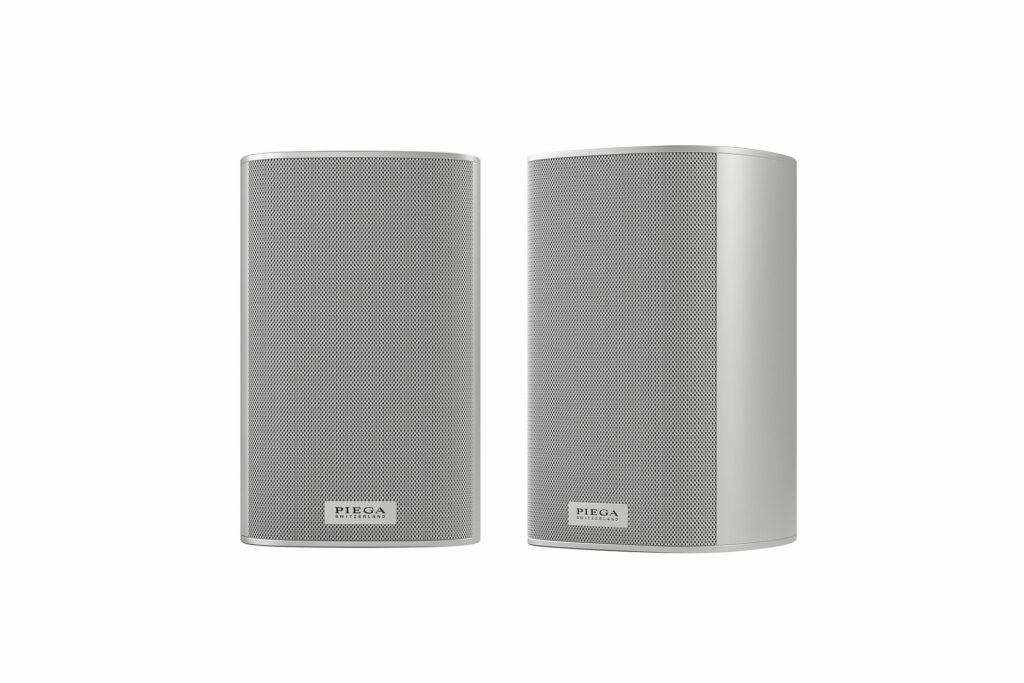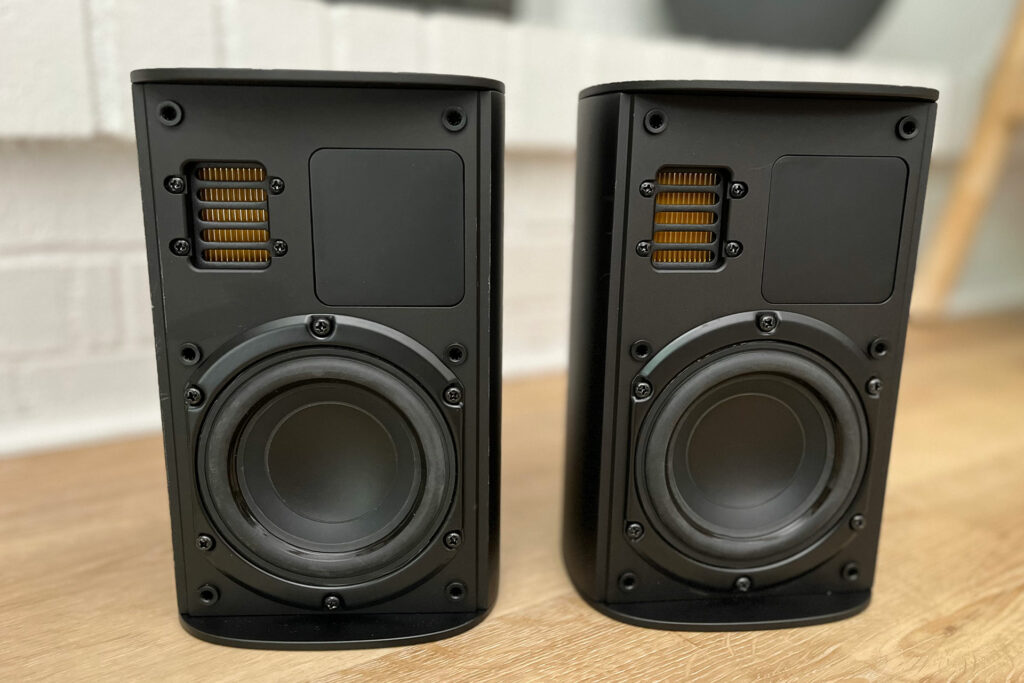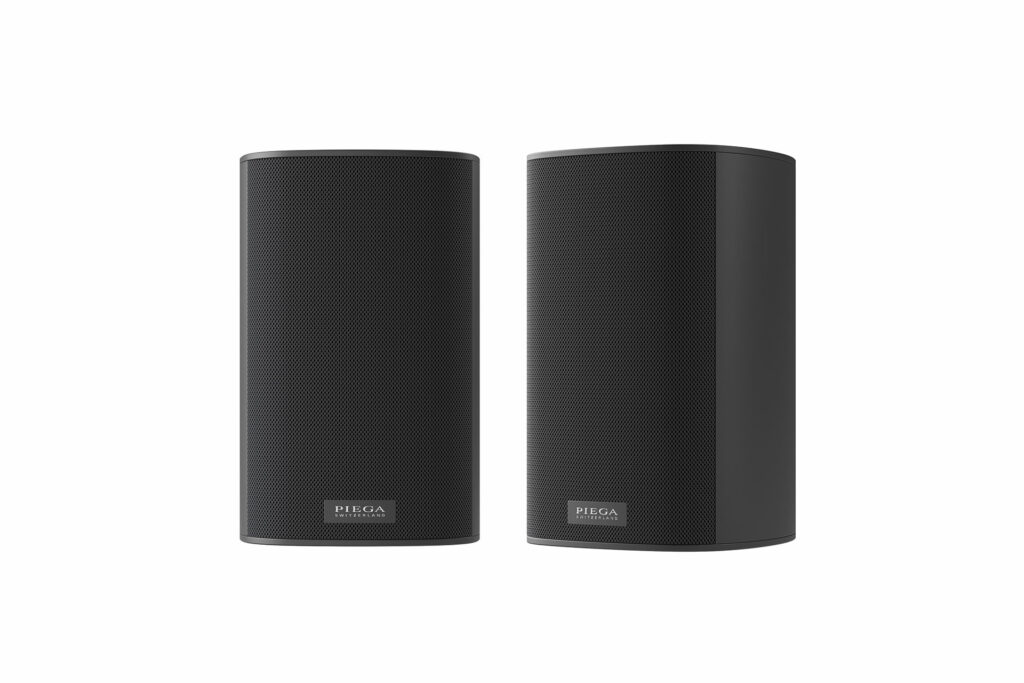Every few decades, a technological innovation transforms the audiophile world. The 1980s introduced the Compact Disc, standardizing audio fidelity. The 1990s saw the rise of MP3s and file-sharing, filling hard drives with music for the first time. In the 2000s, we were introduced to the iPod and the iPhone, putting personal music libraries in listeners’ pockets. Finally, the 2010s and beyond were marked by the streaming revolution and the emergence of whole-home audio, which continues to expand to this day.
Sonos arguably democratized HiFi wireless streaming in 2009 with the introduction of the PLAY:5 amplified speaker. Since then, companies worldwide have sought to replicate the convenience and user-friendliness of the Sonos ecosystem, while enhancing sound quality for more discerning listeners who demand more out of their audio products. Piega, a Swiss company renowned for its high-quality audio products since 1986, is one of many premium brands that has ventured into the aforementioned wireless streaming audio market. Their latest powered speaker, the Ace 30 Wireless, integrates advanced technology into a sleek, compact design, delivering both exceptional sound and the convenience of streaming and digital connectivity. Priced at just under $2,000, the question remains: can the Ace 30 Wireless Speakers justify their cost and outperform the competition in the crowded whole-home streaming audio market? Let’s explore and find out …

What Makes the Piega Ace 30 Wireless Speakers So Special?
- The Piega Ace 30 Wireless Speakers feature every possible modern connection and feature one could want in a wireless speaker pair. Inputs include digital coax/optical, HDMI eARC, analog stereo, Ethernet, and infrared (IR) receiver inputs. An external WiFi antenna is also included. The inclusion of Wireless Spatial Sound (WiSa) allows the speakers to play in stereo or as a group seamlessly without tethering, meaning you don’t need to run a cord from the “main” speaker to its companion speaker in a stereo setup. This diverse selection of inputs and connection options, paired with flexible setup configurations, allows the user to use the Piega Ace 30 Wireless in a variety of contexts and listening scenarios throughout the home with minimal cordage.
- The Piega Ace 30 Wireless Speakers are essentially future-proof in terms of streaming, as they are compatible with just about every service imaginable. This includes Apple Airplay 2, Google Chromecast, Spotify Connect, and Spotify HiFi. They also feature Bluetooth and DLNA capabilities. And did I mention they are Roon-ready? Audiophiles who stream will have no trouble connecting to their favorite services and enjoying the highest-fidelity digital tunes over the air.
- The Piega Ace 30 Wireless Speakers feature a powerful 100-watt Class-D amplifier, a custom air motion tweeter (AMT), and a 4.7-inch driver. With all due respect, these are not your daddy’s Sonos speakers, and you won’t find anything remotely comparable in big box stores or through traditional retail channels. These compact speakers deliver bright, loud, clear, and dynamic sound, with Piega’s proprietary AMT-1 tweeter providing a significant upgrade in clarity and imaging over competing compact powered speakers. The internal amplifier performs exceptionally well at high volumes with minimal distortion, allowing these small yet powerful speakers to fill medium-sized rooms with quality sound.
- The Piega Ace 30 Wireless Speakers feature a solid all-metal build and come in polished aluminum, black anodized aluminum, and white lacquer finishes. The design language is understated but sleek, and would blend well with almost any decor or room aesthetic. The grilles are removable if you’d like to show off the goods, and the gold AMT looks quite high-end when on display. However, with the grilles on, they disappear into the listening space without calling attention to themselves – as a small powered speaker should.
- The Piega Ace 30 Wireless Speakers sound a lot louder and play deeper than their size should allow. At around eight inches tall, five inches wide, and a little over six inches deep, they are quite similar to a Sonos Era 100 speaker in terms of size. However, they are able to play significantly louder and clearer, and with three to four times more dynamic punch. Bass is surprisingly competent as well, which was a pleasant surprise, considering the midrange driver is on the smaller side. Piega’s stated 35Hz low-end frequency range might be a little optimistic, but bass was present and competent.
- Piega’s Ace Wireless lineup features a companion subwoofer, center channel, and floorstanding speaker pair. If you are looking to assemble a seamless, timbre-matched whole-home and/or surround system sans separate components, Piega has you covered. Just note that this is a premium brand, and the price will be significantly higher than your average whole-home system.
Why Should You Care About the Piega Ace 30 Wireless Speakers?
As a busy working dad and aspiring audiophile, I often find it challenging to dedicate time to sitting uninterrupted in front of my main two-channel system for a critical listening session. That’s why having a whole-home audio solution is invaluable for those of us with limited time and hectic schedules. Like many audiophiles, I demand the highest quality from every listening device I purchase. Whether I’m helping my kids with homework, cooking dinner, or moving around the house during a DIY project, I want my audio experience to be exceptional. Investing in a high-quality whole-home audio system is undoubtedly worthwhile, and the Piega 30 Wireless speakers are an excellent choice for fellow audiophiles seeking superior sound quality throughout their homes. They are also good enough to function as left and right channels in a compact main stereo setup, so this versatility is not lost on this reviewer.

Some Things That You Might Not Like About the Piega Ace 30 Wireless Speakers
- The Piega Control app works well – when it works at all. The initial setup was a little frustrating, and I think that had a lot to do with the fact that I am an iOS user. Even though Piega advertises its app as both Android and iOS-friendly, I was surprised to discover the initial setup process required me to download the Google Home app for iOS to discover and set up the speakers. I had assumed everything would be done in an iOS version of the Piega Control App, but this was not the case. After much frustration, I was eventually able to discover and sync both speakers via Ethernet, but the WiFi option was tenuous at best until I randomly got both to connect. Once I finally got everything working, I enjoyed playing around with the EQ settings and room calibration within the Piega Control app, which seemed to work fairly well. For the cost of these speakers, though, I expected a seamless, user-friendly setup experience with minimal hiccups, so this is definitely something that could be improved.
Listening to the Piega Ace 30 Wireless Speakers …
I was immediately drawn to the Piega Ace 30 Wireless’ ability to produce clean, clear, dynamic midrange – so I selected the song “Here They Come” off the album The Loves of Your Life by Hamilton Leithauser. Leithauser (perhaps best known from his time as the lead singer of the Walkmen) has a reputation for producing stunningly-recorded, lush, multi-faceted albums, and this track shows his mixing prowess off quite nicely. Leithauser’s deep, dark vocals and plucky guitar sounded crisp and detailed off the bat and the stereo imaging was gorgeous. The Piega Ace 30 Wireless then handled the explosive chorus well, even at higher volumes. There was some subtle bass distortion noted – likely the result of me pushing these small speakers a little too hard – but I was able to course-correct via the onboard EQ for a smoother sound. Overall, the track was presented admirably, filling my medium-sized listening room with accuracy and depth. I had to do some tinkering with placement due to some off-axis response issues (as is fairly common with AMTs), but once I found the sweet spot for my listening room, I was very impressed.
I then made a left turn and decided to test the Piega Ace 30 Wireless’ dynamic capabilities with Ramin Djawadi’s “T-60” from the Fallout TV series score. Djawadi is arguably one of the best living film score composers, best known for his work on Game of Thrones. During my second viewing of Fallout on Amazon Prime (which features a humorous audiophile parody featuring Fred Armisen – check it out on our Instagram), this track stood out to me for its unique blend of glitchy electronic elements, paired with deep, booming brass and bass. The dynamic range and variation within this track were a tough assignment, even for larger speakers in my collection, so I wanted to see if the Piega Ace 30 Wireless could handle it as well. Impressively enough, the Ace 30 Wireless Speakers were up to the task. High and midrange frequencies shone beautifully, thanks to the more-than-capable AMT-1 tweeter, which bordered on bright at times, but was never piercing or shrill. I did connect an eight-inch subwoofer for an A/B bass comparison, and the Piega Ace 30s really came to life when bass was funneled away from their modest 4.7-inch drivers during the punishing digital bass notes during the final third of the track. This was an all-around solid performance, especially impressive given their modest size.
Will the Piega Ace 30 Wireless Speakers Hold Their Value?
Most audiophiles will attest that Piega is a high-end Swiss brand renowned for its exceptional build quality and outstanding sound. The average music or home theater enthusiast is unlikely to have heard of the brand, which may limit long-term resale value and mass appeal. However, given their cost, solid construction, and forward-thinking design, audiophiles can feel confident that their investment in Piega speakers will long outlive their price tag. I also appreciate their modular and flexible design, making it easy for an audiophile to start with a pair of Ace 30 Wireless Speakers as a main powered stereo setup and later reassign them to a different room or purpose. Theoretically, one could purchase the Ace 30s and then upgrade to the larger Ace 50 Floorstanding Speakers, moving the smaller pair to a different room or utilizing them as rear surrounds in a home theater setup. Readers familiar with my reviews know that I value flexibility and versatility, and Piega’s Ace line offers this in spades. The company also offers a high performance, audiophile-grade subwoofer that can reinforce the low frequencies of these smaller bookshelf speakers.

What is the Competition for the Piega Ace 30 Wireless Speakers?
- The KEF LS50 Wireless II is a similar powered speaker with a comparable set of connectivity options for around $2,499 per pair. The LS50 IIs feature Bluetooth 5.0 with aptX, Wi-Fi, Apple AirPlay 2, Google Chromecast, Roon, and a quality-control app. Physical connections include HDMI eARC, Toslink optical digital input (24-bit/96kHz), coaxial digital input (24-bit/192kHz), an Ethernet port, analog 3.5mm auxiliary input, and mono RCA subwoofer output. Combine this with KEF’s lauded Uni-Q concentric driver design, and you have a speaker that can do just about anything, and do it well. KEF’s cyclops-inspired aesthetic is not for everyone, however, and the LS50s are larger than the Piega Ace 30 Wireless Speakers, so it truly depends on size preference and taste.
- For a little less money, one could consider a pair of the Bluesound Pulse 2i streaming music speakers. At $1,400 a pair, these nifty compact speakers are a little more familiar to most consumers in terms of design and footprint. Each speaker features a 150-watt internal Class-D amplifier, two 5.25-inch drivers, and two one-inch tweeters. That’s a lot of speaker in a 16-inch-wide, seven-inch-tall package, and they do sound great. You also get all the modern connection and streaming options needed and have the added benefit of the excellent Bluesound OS, which is highly regarded in the audiophile world. These physically resemble the more mainstream tabletop or whole-home speakers found in big box stores and on Amazon, but sound significantly better, so I doubt you’d be disappointed in a pair of these in your listening or living room.
- At $2,400 per pair, the Mcintosh RS150 is a worthy competitor that pack a lot of features into a relatively compact package. This retro-styled powered speaker boasts 120 watts total amplification per speaker and features a 5.25-inch long-throw mid/bass woofer and one three-quarter-inch titanium dome tweeter. Most modern connectivity and streaming options, such as Bluetooth 5.0 with aptX HD, AirPlay 2, Chromecast, Spotify Connect, Spotify HiFi, TIDAL Connect, and Roon, are included. They are rear-ported, and have a frequency response of 48-20,000 Hz, so don’t expect a ton of deep bass without adding a subwoofer. As for the design – this is classic Mcintosh, featuring front panel knobs and a glowing blue meter. The aesthetic could not be further from the Piega Ace 30’s subtle, modern look, so it really depends on the listening space and visual preferences of the listener.

Final Thoughts on the Piega Ace 30 Wireless Speakers …
The Piega Ace 30 Wireless Speakers are a force to be reckoned with. They are the definition of tiny-but-mighty, and can serve laudably as main speakers in a compact stereo system, or integrate seamlessly into a whole-home or surround sound setup. Packed with every streaming and connectivity option imaginable and loaded with quality components, they are an excellent all-around powered speaker pair. Yes, the $2,000 price tag may be a little difficult to swallow given their size, but one would be hard-pressed to find a better high-end, compact powered bookshelf speaker in today’s market. If you value convenience, flexibility, and superior sound quality compared to most speakers in this category, the Piega Ace 30 Wireless Speakers should be at the top of your list.




Gulp…
Did you swallow a speaker?
Why the gulp? 🙂